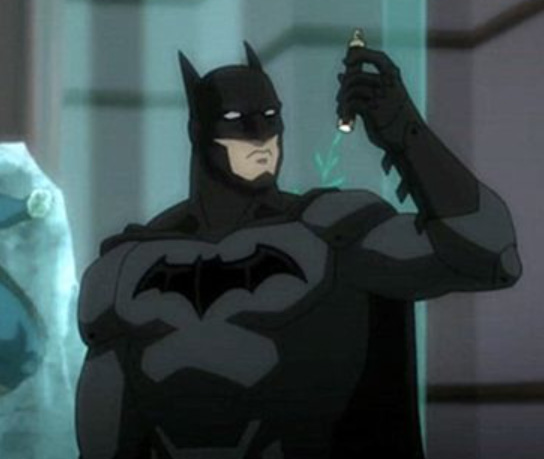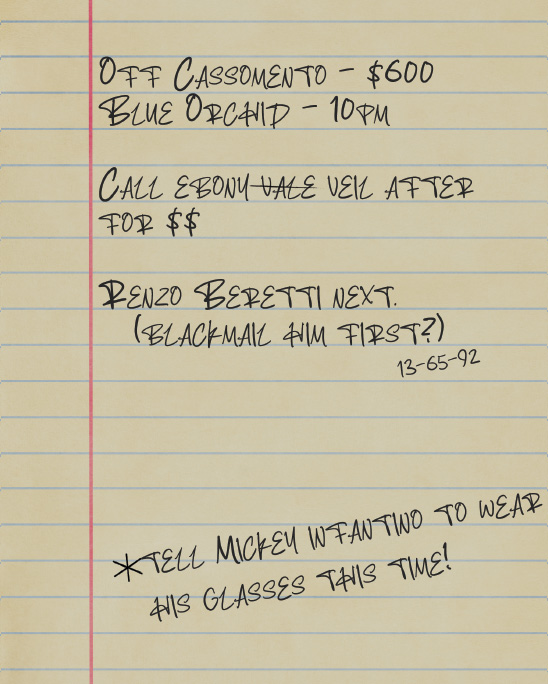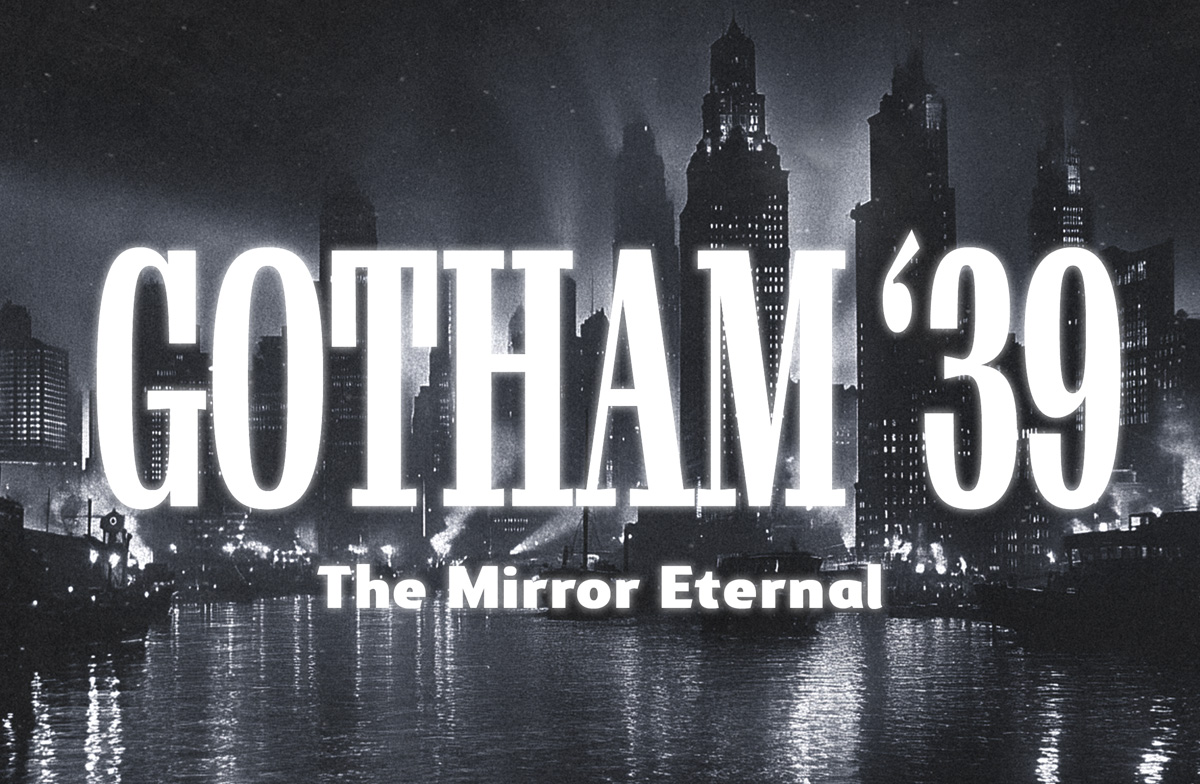Years ago a common criticism of Call of Cthulhu‘s investigative adventures was “if the players fail a single Spot Hidden roll to find a clue, the adventure is over.”

I think that’s mostly a lazy critique. It’s like saying if your D&D players never find the dungeon, the adventure is over.
But there is some truth behind it. Some RPGs, especially horror ones like Call of Cthulhu or Vaesen, lean heavily on investigative adventures. Unlike a typical fantasy adventure, like a dungeon or an epic quest, investigative adventures are written more like the outlines of a TV episode. These adventures are designed to feel more like the source material they are emulating, like a good horror story or a Sherlock Holmes adventure. They have plots, backstories, characters with relationships, twists, and clues. Lots of clues.
Clues can make or break investigative adventures. Ideally, clues will appear, provoke thought and debate, create more options for players, and then move the game along towards an epic ending. But placing clues is an art. Unlike a troll guarding a door, a clue can easily be missed!
And, one person’s “that was so obvious” clue is another player’s “oh my God how would you expect me to ever find that?!” one. Your players’ abilities to find and put clues together can vary a lot!
I played in a game once where we were trying to solve a murder. We missed the one clue in a garbage can — no one thought to look — and we spent an hour touring various nearby diners, gyms, and libraries and never found a single plot hook. Yes, the GM gave us agency to miss clues and do what we wanted, but no, we didn’t feel like we were making any progress. Bad GMing? Probably. Bad adventure writing? Definitely yes.
But if clues are too obvious, the adventure feels linear. If you examine a crime scene and find threatening note from the neighbor in the victim’s pocket, well, you’re 100% going to visit that neighbor next. There’s little agency there, either.
Gotham City in 1939…
This month’s adventure is Gotham ’39 – The Mirror Eternal, a pulp noir mystery set in the 1930s of Gotham City. The investigators aren’t caped crusaders —they’re skilled but ordinary investigators, fighting against corruption and crime with luck, wit, and determination.
Gotham ’39 features both linear sections and open-ended ones, which I think is a strong way to build an investigative adventure. The adventure starts with a murder, one the PCs witness. The superstitious mob boss Santo Cassamento is gunned down at a nightclub, and something weird is going on with his body. There are a few scattered clues, but more importantly, the PCs soon find themselves blackmailed and told to meet at a secret location later that night… or else.
It took me forever to place clues in this adventure. I used lots of player feedback and even technology (thank you Notebook LM!) to constantly place, replace, and rethink clues. Where was Batman when I needed him?
But in the end, I think it worked, and players will navigate this adventure feeling both smart and like they have real agency. So, here’s my best advice to placing clues in your RPG adventure:
Use Different Types of Clues
Very aware that players have different relationships with clue-finding, I made sure to use lots of different types of clues:

Physical evidence. These clues are the typical ones — paper in desk drawers, shards of glass in a mobster’s pocket, photographs in a safe. Some are hidden and some are obvious. I also like to reinforce physical clues with handouts, which gives your thoughtful players something to look at and feel as they are putting the mystery together.
Witness testimony. There are a lot of NPCs in Gotham ’39, and I doubt most groups will encounter half of them. But I made sure that every NPC possesses a clue… if the PCs can pull it out of them. Of course, finding these clues requires the right combinations of diplomacy, fast-talking, and intimidation. By hiding clues behind NPCs with big personalities, roleplayers and social skill-loving players have ways to move the adventure forward.
Research. Some players love the part of the mystery where they hit the library. I intentionally added a library for those players who like to bias towards research when they get stuck. Generally, my library clues overlapped with other clues, but provided more detail. Sure, you could hear a reporter tell how the Beretti crime family once blew up a building, but the library gave you more details on it.
Contacts. I made sure that the PCs started the game with a few contacts. In GURPS, this is easy because there’s literally a Contacts advantage which lets you reach out and ask for advice. But even with other RPGs, give your PCs a few key contacts at the beginning — an old newspaper editor friend, fellow Jazz musicians, whatever.
Redundant, Redundant Clues
I always make sure that two similar clues are placed at two different locations. In Gotham ’39, for example, the PCs can find a copy of a ritual page which is key to understanding what’s going on. But the ritual page can be found in three different locations, because they were owned by three individuals. This means missing a clue isn’t a big deal… it will likely be found later.

Clues Should Have Consequences
Some clues trigger strong reactions from some key NPCs. This makes finding clues feel less ordinary, and more exciting, or even dangerous. For example, there are two smuggling rings in Gotham. If the PCs disturb either of them (which is highly likely!), the bloodthirsty smuggler kingpin will come after them for vengeance. When the world reacts to clue-finding, it feels more real.
Secret Clues
I placed some difficult-to-find clues that will reward players who comb over every detail, but won’t stop the investigation if not found. For example, in one location there’s a hidden safe. If the PCs find it, they can find photographic evidence that will take down a mobster. This can give them a huge advantage in the investigation, but if they don’t find it, that’s okay, they’ll have to just find a different mobster to influence.
A Tangled Web… and Gencon Incoming!
Despite all of this careful placement, I’m 100% positive I missed things, and that there are potential dead-ends or hiccups in this adventure. I’m planning to run it at Gencon 2025 this year, so I have a few more months to iron out the details. If you get a chance to run it ahead of that convention, let me know in the comments below how your group fared!
Also, this was the first adventure I wrote where I used Google’s Notebook LM as an editing assistant. I regularly uploaded alpha versions of the adventure and asked it to find plot holes, build timelines, and look for dead ends. Really fun to have an AI tool that helps me hone an adventure before I bring it to the table (it never wrote anything for the adventure, just helped me find gaps!). And I had a blast listening to its podcast output, which let me find even more errors, when the “hosts” talked about a character motivation that was simply not true. If you want, you can listen to it here, which gives a nice overview of the adventure in about 15 minutes.
Get Gotham ’39 – The Mirror Eternal FREE here:
Powerful mob families are tangled up in something dark—something they don’t understand. The whispers say they are summoning a demon, but the truth is stranger. As the players dig deeper, the bodies pile up, the lies get thicker, and a new villain steps from Gotham’s shadows.
- Gotham ’39 (Batman: Gotham City Chronicles RPG)
- Gotham ’39 (Batman: Gotham City Chronicles RPG) – Printer Friendly
- Gotham ’39 (GURPS Pulp Noir)
- Gotham ’39 (GURPS Pulp Noir) – Printer Friendly
- Gotham ’39 (Pulp Call of Cthulhu)
- Gotham ’39 (Pulp Call of Cthulhu) – Printer Friendly
- Gotham ’39 – VTT Assets
Related: More Obvious Superheroes


More 1930s pulp? Be still my heart!
I tried to play the “The Dragon’s Demise” adventure but I am completely new to D&D and I gave up on playing because it doesn’t explain how to do the simple things like persuasion checks or other checks. An explanation of the basics like that would be really helpful to new players wanting to check out a D&D adventure.
Definitely check out the free D&D rules available on the dndbeyond website. In future updates I’ll link to them so that people without any experience can have a better shot at getting through the adventure!
These are supplements to go with the core rules of a specific system. Not the game it’s self.
You need to read the core rules for the game system in question , those are often published by another company so the writer of a supplemental adventure can not always publish the rules for the system..
Not a bad scenario at all, though not really suitable for our campaigns without modifications, alas.
I like the sixth character you provided. A neat touch. And the plot idea is interesting.
A few typos/errors that popped out at me
1. On page 7 “….as his examines the bullet-ridden body.”
‘his’ should be ‘he’.
2. Page 18, in the stat block for Anthony Beretti there is reference to a .38 Sears revolver having ‘Shots 5+2’. Is this correct? I seems a bit odd.
3. Page 44, the point value for Mitchell Malone is listed as 150. Is this correct, he seems more like 350 points.
4. Page 2. “….each of them will take them to closer…”
I assume the ‘to’ is an error?
5. In the opening paragraph “….then a witness to an…”. The ‘a’ seems wrong given that the sentence refers to a group.
Thank you, made those edits! (I did keep Malone at “150 points” just to disguise it a little from other players at the table…)
No problem. I hate critiquing such minor details but my proof-reading brain notices them…..
I’m thinking of adapting it for AITAS (the Doctor Who RPG) substituting Weird Science for the magic elements.
In the 1930’s H&R produced a revolver sold under the Sears & Ro branding, it was a 7 shot .22 caliber rimfire.
Section 1 typo list:
with a large platter bearing several specialty silver cocktail shaker.
Yellow Funzi gleefully indiscriminately into the crowd.
won’t not care at all
So is the promise of giving the corrupt cops a good word to let them escape [confusing]
Puggy shares that his guess is that he wonders [confusing]
crushed a man’s skull like a baked potato [confusing]
from the dressing rooms.:
a seance last week or something.”
‘Girl, you best keep
your ears on them piano keys.’”
[Both have ending ” without starting “]
More fixes to make:
into the warehouse without being notices
they’ll heal the whoosh of his cape
Part III
“In this second part of the adventure”
PCs have >severalseveralmightmightmostmostthe organthe organ<
the abox begins to react.
The surviving crime lords, fade
villains in the adventure.).
Weird formatting. Errors are here:
https://docs.google.com/document/d/1JNGtCkA7g0RxQMUzOLOqnWC6b0wuGiPJTE7kx23kOhE/edit?usp=sharing
Thank you so much! Fixed in the updated version!
Part 4 is labeled Part III. Sorry to keep finding these…I’m running it tonight!
Sections marked with a [person] are opportunities for specific PCs, notably the pregenerated characters from the end of this adventure. [Are there any?]
Foolish me. Page 7.
My group took on the worst Gotham underworld had to offer and came out on top! Crooked cops, stool pigeons, and masked maniacs weren’t able to keep the group flummoxed for long. We had a problem with the opening shootout, because not all the characters had guns; the architects knock off, and the magician hit under the table. Dr 13 had to burn some luck points not to get taken out by a crit. (not my fault, I made other players rolled that bad guys attacks.) the final scene also felt like a bit of a roll until you succeed shoot out, because the bad guys don’t have any apparent weaknesses besides the glowing hearts. Even with trying to convince the bodyguards to attack the creatures instead of each other, it felt like it was just rolling until they could get the right numbers. Zatara cut off the piano player’s fingers with a sword, which was cool, and made friends with the Tattler reporter in exchange for fawning coverage of his upcoming come back tour.
The architects snuck off, and the magician hid under the table…
As for clues, it felt like the players had a very natural progression as they learned everything, very few times where they stoned, and there was mystery instead of confusion. The handouts were all a big hit! I think they struggled with some of the cursive on the clock note. Also, the page that was supposed to misspell heptagon spells it wrong in the annotation as well, which confused the heck out of me.
Sorry for the thousands of comments!
Ah, cursive… the bane to every modern gamer! Thanks for the play description – super helpful to see how these run when it’s not my own table. I went and fixed a bunch of stuff in the adventure, and added in that the ring in the Whispering Lantern would allow the PC to directly affect the Bearers, giving them a bit more options if they go that route. Love that Zatara had his moment of glory at the end. Did you use the “Mitchell Malone” character?
Didn’t offer him. 4 players, nobody picked the singer.
Part 3 still sez “In this second part of the adventure,”
As for the error searching, I couldn’t open the Zip file, and the Alice Starr sheet (in CoC version) has the same gear and possessions than Val Kaliban (it’s OK in the Gurps version). I didn’t get the thing between Raya Vestri and Alice Starr, but I read it very quickly. Must reread.
I think I found the issue with the .zip file, see if that worked. Also, I fixed the equipment issue for Raya in the latest version. “Alice Starr” was an old name for Raya Vestri, so I fixed that as well so it all matches up now.
It’s OK now, thanks. I don’t know when we’ll play it, may be next month, but I’m excited to play it.
Still running this module, did a first session a few days ago and it went pretty well. Here are a few things that I noticed in the module that I want to critique a little bit
– The blackmail letters that the players got said “meet at the Blankinship Warehouse at midnight”, but the module then says that they’d be called there at 2 AM. I had to compensate for this by just moving the times around but you might wanna edit that.
– Raya’s blackmail letter also seems to be real, far as I can tell at least, so maybe remove the character note saying it wasn’t meant for her.
– Handout C says “V. Cassamento” for the person it was sold to, it should probably say “A. Beretti” instead. More relevant for my group since I like handing them the clues and having them pick out the details themselves, and the “V. Cassamento” could possibly cause confusion.
– This one is very much a nitpick, but Handout G says “Renzo Beretti” next for who Yellow Funzi would attack first, but when the players trick the Ebony Veil over the phone he tells them to go after Paddy next. This is relevant in my group because they didn’t fight Funzi, and I want them to have a confrontation with Funzi at Green Glove Boxing, just worried about Handout G confusing them, and I like a little consistency in how events would play out if the player characters don’t intervene.
If I find more things during my next session that might need to be edited I’ll add a reply to this comment, but for a free module this is honestly pretty high quality all things considered, so thanks a lot for that 🙂
Ack, I missed those little mistakes in the handouts! Definitely a result of me tweaking names and times at the last minute but missing them in the image files, haha. Anyway, I fixed everything in the newest downloadable version (1.2) so your players should avoid any confusion and gave you a special thanks for the awesome feedback. Thank you!
Nice. Also, I’m Gold. Same person 🙂
Haha, now I’ll have to remove one of you from the special thanks 🙂
Very excited to run! This is so professional looking. Do you accept tips?
Sure, you can always Buy Me a Coffee! https://buymeacoffee.com/1shotjc
Done!
Thank you very much, I’m truly humbled! 🙂
Awesome! I’ll have to wait to read this one until after GenCon as I’m hoping to sit and play it with you!
This scenario has been a great read so far. Looking forward to running it soon!
One small problem with the handouts – the blackmail notes each have a red line under “Blankinship”, as though it was highlighted by spell check. It stands out on a note otherwise designed to look like it was typewritten.
Just thought you’d like to know!
Thanks for spotting that – fixed it and uploaded a new VTT .zip file!